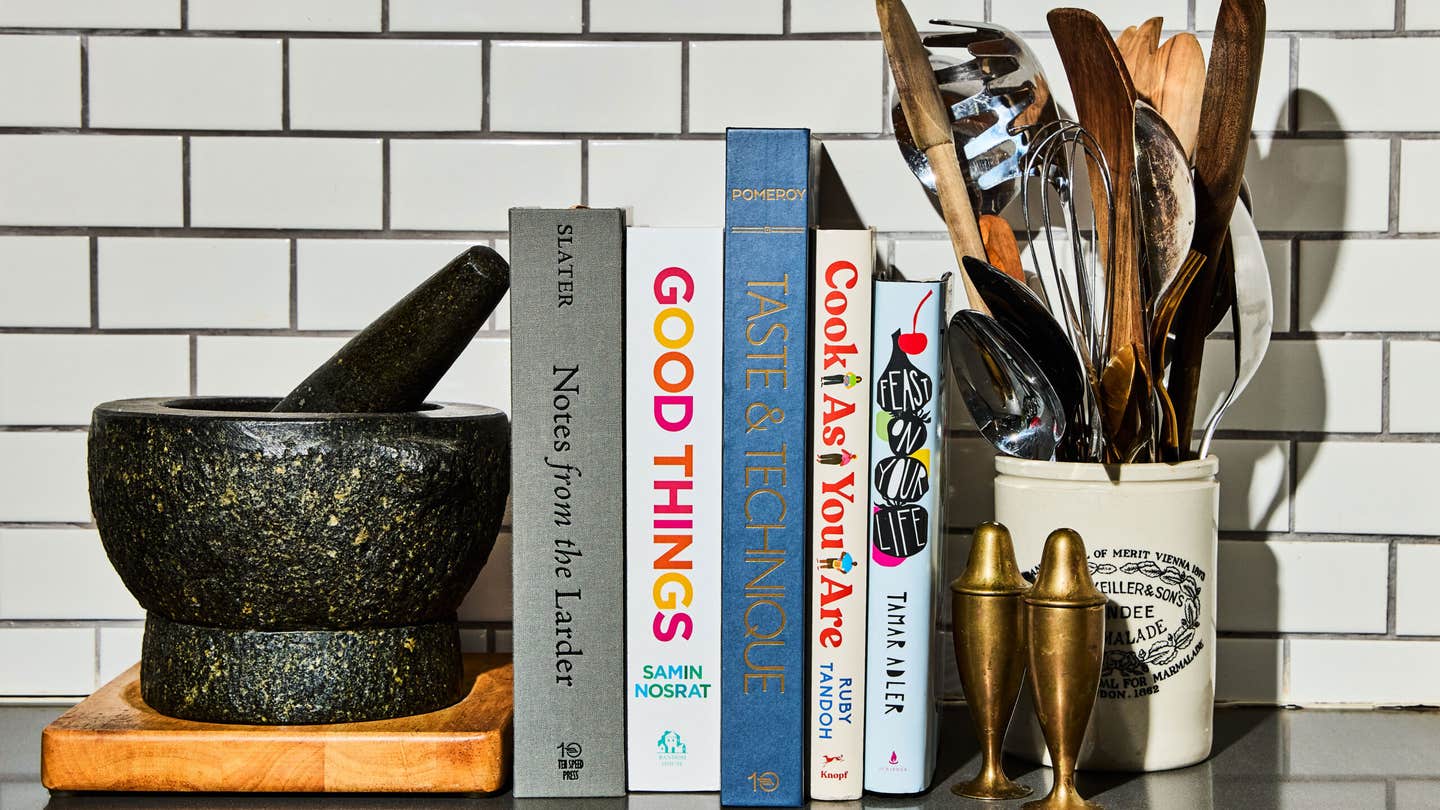
The Perfect Food
Calvin Trillin once wrote that anyone who doesn't think the best hamburger in the world is in his own hometown is a sissy. Well, I'm no sissy. Then again, I'm from LA, the Burger Capital of the Universe. When I was growing up there in the 1970s, we had places like In-N-Out, back when its outlets were few, and Fatburger—the original stand on Western Avenue which made the juiciest, messiest, most delicious burgers imaginable. We had the Apple Pan, the funky little place on Pico, still there and still great, where the patty is thin and the burger comes with a relish-y ketchup or hickory sauce and a crisp wad of lettuce. We had Bob's Big Boy and Hamburger Hamlet and Pie 'N Burger in Pasadena. McDonald's started in Southern California; so did the burger chains Carl's Jr. and Jack in the Box.
Which was my favorite? They all were. And are. When it comes to hamburgers, I'm like one of those men who love women, every kind of woman: plump ones, thin ones, plain ones, fancy ones. And I love every kind of burger: thick, juicy patties that come off backyard grills and go onto supermarket buns; the broiled sandwiches you eat from a red plastic basket at a burger joint; gourmet burgers, like the one made with ground dry-aged rib eye, skirt steak, short rib, and brisket at Minetta Tavern in New York City; or just the kind you make at home on a Wednesday night, griddled in a cast-iron pan and loaded up with whatever toppings feel right at the time—creamy blue cheese melted atop caramelized onions, say, or slices of avocado and bacon and juicy red tomatoes, or maybe just bread-and-butter pickles and american cheese.
You want one, don't you? I know, because unless you're a vegetarian, the chances are good that you're mad for burgers too. We all are, even our commander in chief. The first time Barack Obama flew on Air Force One, what did he order for lunch? A steak and a caesar salad? A sushi platter? A turkey sandwich? No. A cheeseburger.
Whence all this passion? I've always thought it has to do with the fact that burgers are a sort of comfort food "plus". They're not like macaroni and cheese, which is wonderful in its way but kind of a one-note pleasure. A hamburger is a complex food, possessed of all kinds of flavors and textures and temperatures. It's the synergy of the thing: the bun, soft or firm, brushed with butter and grilled; the cool, crisp lettuce; and that seared, juicy ground beef. You take one bite, and it all comes together. It sings.
The inherent subtleties of this food never cease to intrigue home cooks and chefs. Recently, a former wine bar owner named Adam Fleischman opened a place called Umami Burger in my hometown. What, I asked him, does umami—the so-called fifth taste, whose name means savory or meaty in Japanese—have to do with burgers? Fleischman said that he believes we are drawn to hamburgers because they have an innate umami character. He explained that umami foods—like beef, tomatoes, mushrooms, aged cheeses, and foods that are fermented or cured, such as miso and fish sauce—are rich in certain amino acids and ribonucleotides that both create and satisfy a deep craving. They make your mouth water and leave you with a rich, contented feeling inside. And because hamburgers tend to possess so many umami flavors bundled together—particularly in the case of the eponymous burger at Umami Burger, which features such toppings as oven-dried tomatoes and nutty-tasting parmesan crisps—they are objects of the most intense desire.
Burgers have been an American obsession practically since beef first found its way onto a soft bun, though nailing down exactly when that happened is probably impossible. Historians like to point variously to the Tatars, that ancient Central Asian people who liked to eat minced raw beef, and the hamburg steak, a workingman's meal of chopped beef sold from lunch carts in the late 19th century. But who actually created the first hamburger sandwich? Who knows? It wasn't Charlie Nagreen in 1885 in Seymour, Wisconsin, though he is often credited with serving a meatball between two slices of bread. It wasn't Fletcher Davis, a Texan, who supposedly sold a ground-beef sandwich at the 1904 world's fair in St. Louis. And it wasn't a cook who served steak on toast at Louis' Lunch, the long-lived restaurant in New Haven, Connecticut, in 1890. These candidates for creator of burger zero actually made protoburgers, served on bread, not buns. The first documented instance of a hamburger on an actual bun can be traced to Walter Anderson, who started serving beef patties on bread made for the purpose at his White Castle restaurant in Wichita, Kansas, in 1921.
Things happened fast after that. By the 1920s, cheese had found its way into the equation, and lettuce and tomatoes soon followed. By the 1940s, the burger was sitting at the very center of American social life, both at the drive-ins and diners that were the heart of youth culture in virtually every town in the United States and at home, where backyard barbecues became the quintessential suburban weekend ritual. It's a rite we still observe with fervor, and it's distinct from other culinary traditions. The art of grilling a hamburger, unlike the act of baking a pie or roasting a chicken, isn't handed down from mother to daughter but rather from father to son. Mom may have formed the patties in the kitchen, but smoke, fire, and grill are Dad's domain.
Many home cooks took to tinkering with their ground beef, playing with different seasonings and sauces, and by the 1950s companies like Lipton's, Heinz, Lawry's, and Lea & Perrins were marketing all sorts of products, from dry soup mixes to worcestershire sauce, as burger enhancers. The recipe booklets and cookbooks of the time were chock-full of ideas for making bigger burgers, more stylish burgers, burgers with exotic spices, and on and on. "In the Oriental sauce there are the undertones of a good chutney...it does an exotic something for hamburgers," wrote Clementine Paddleford, the influential food columnist, about a molasses-ginger sauce recipe in her How America Eats column in 1962. "There never was a sauce that could make a poor hamburger taste better."
That same inventive spirit drove grill cooks and burger joint operators, for whom the burger had become a potent symbol of good old American ingenuity and entrepreneurial independence. Multiple regional variations on the standard burger started to sprout up (see Doing It Their Way), and burger stands raced to lay claim to new inventions: pizza burgers, chili burgers, and—with the proliferation of health food fads in the 1970s—tuna burgers, turkey burgers, and veggie burgers. Like hairstyles and hemlines, burgers became signs of the times.
We ate burgers at home. We ate burgers out. We ordered them in taverns, on the cafeteria line, at the coffee shop counter, from the roller rink snack bar—everywhere. The food's extraordinary adaptability made it an ideal bridge between casual dining and formal. By the 1970s, lots of fine restaurants—the '21' Club and The Colony in New York, Chasen's in LA—had put a burger on the menu, though it was there more to placate picky eaters than to enlighten discerning ones. It took a good long while for serious chefs to embrace the burger. The watershed moment may have come in 2001, when the French chef Daniel Boulud opened DB Bistro Moderne in New York City and introduced his $29 DB Burger, which was stuffed with braised short ribs and foie gras.
So began the age of the glam burger. Chefs around the country started to reinvent the genre, building burgers that were richer, fatter, and sexier. Japanese Kobe beef, Perigord truffles, handmade brioche buns—the list of pricey ingredients grew and grew. Nowadays, it's not unusual for marquee-worthy chefs to run a burger-centric restaurant or even to go folksy with an old-school, if upscale, burger joint. Take Hubert Keller, long respected for his elegant San Francisco French restaurant Fleur de Lys: today he runs a chain of high-end casual restaurants called Burger Bar, in Las Vegas, St. Louis, and San Francisco. And then there's Bobby Flay, who has just opened a string of Bobby's Burger Palaces across Long Island and New Jersey. At the end of the day, I confess that this frenzy to elevate the food, to load it up with expensive or extravagant ingredients, tends only to intensify my craving for a good, old-fashioned backyard hamburger.
The best burger I have ever tasted was, in fact, produced in the backyard of my friend Emily Green, a writer, who had invited a bunch of people, including the chef Nancy Silverton, for burgers one Sunday afternoon. She'd asked Nancy to make the burgers, and they were splendid: succulent, meaty, perfectly balanced, and perfectly seasoned. They were cooked to medium rare on a well-seasoned cast-iron griddle, topped with a thin layer of melted gruyere, a slice of ripe tomato, some lettuce, slivers of avocado, a little chile-spiked mayo, and ketchup, and served on a soft bun. Impromptu as the meal seemed, a lot of thought had gone into those hamburger sandwiches, from the grind of the meat (a coarse blend of chuck with some sirloin fat added in) and the seasoning (just salt, applied right before cooking) to the toasting of the soft bakery buns (which she'd chosen over the ciabatta from her own La Brea Bakery).
Watching Nancy cook those perfect burgers on that late-summer afternoon made me pause to reflect on the burger makers who had come before her: the line cooks and lunch counter operators, the celebrity chefs with their truffles and foie gras, and all those countless spatula-wielding dads—including my own, who used to press down on his sizzling burgers, sending the flavorful juices into the coals. Even so, his burgers always tasted great.
Keep Reading
Continue to Next Story










